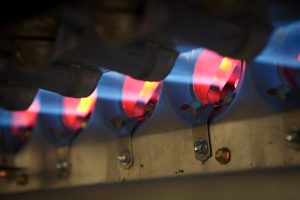 At Bob Mims Heating & Air Conditioning, we’re always looking toward the future of heating and AC technology. Like any field, HVAC continues to advance with new developments, refinements, and innovations. Even comparing air conditioners and furnaces from only a decade ago shows how far the new equipment has advanced.
At Bob Mims Heating & Air Conditioning, we’re always looking toward the future of heating and AC technology. Like any field, HVAC continues to advance with new developments, refinements, and innovations. Even comparing air conditioners and furnaces from only a decade ago shows how far the new equipment has advanced.
We’ll take the gas furnace as an example. After all, it’s the most common type of heating system in the country, and many Staten Island, NY homes have gas furnaces working through winter to provide them with warmth.
Gas Furnace Efficiency Is on the Rise
Gas furnaces used to have energy efficiency ratings (AFUE, “annual fuel utilization efficiency”) between 56% and 70%. That percentage is the amount of natural gas a furnace converts into heating power. Those numbers mean that furnaces would end up wasting between 44% to 30% of their fuel source, losing most of it to exhaust out the flue or heat bleed from the combustion chamber.
Today, we’re looking at a much different story for furnaces. Modern furnaces have a range of AFUE from 80% to an astonishing 98.5%—only 1.5% of the natural gas goes to waste! The current ENERGY STAR regulations for natural gas furnaces require them to have an AFUE of at least 90%.
The Advances in Natural Gas Furnace That Create High Efficiency
There are many different technologies that have contributed to the development of the high-efficiency furnace:
- Electronic ignition: People are used to thinking of pilot lights as a standard part of furnace operation. But not anymore. Because standing pilot lights constantly use natural gas to stay lit through the heating season, they drain power. An electronic ignition system only comes on as needed, and this removes a major power waste from the furnace. Electronic ignition is more reliable as well.
- Condensing furnaces: The furnaces that score 98.5% AFUE ratings are called condensing These gas furnaces contain a second heat exchanger that takes the exhaust vapor from the first heat exchanger and condenses it, which releases even more heat. A condensing furnace squeezes the most amount of heating power from its fuel supply of any gas furnace on the market.
- Sealed combustion: A combustion chamber in a furnace that’s open to the rest of the house (atmospheric combustion) will end up losing heat from the burners to the area around the furnace. Sealed combustion chambers stop his heat loss. They instead draw the air currents they need for combustion through a PVC pipe that runs to the outdoors. Seal combustion also prevents problems with a house becoming too dry when the furnace is running.
- Two-stage furnaces: A two-stage furnace can modulate the strength at which the burners operate. When a home doesn’t require as much heat, the furnace drops the burners down to lower capacity so they consume less fuel. Older furnaces couldn’t do this: the burners worked at maximum power all the time, regardless of a home’s heat requirements.
If you are looking for a high efficiency natural gas furnace installation, all you have to do is contact our HVAC technicians. They’ll find the idea furnace to meet your home’s comfort needs and save you money in the bargain.
Bob Mims Heating & Air Conditioning: Serving Staten Island’s Heating and AC needs since 1955.

